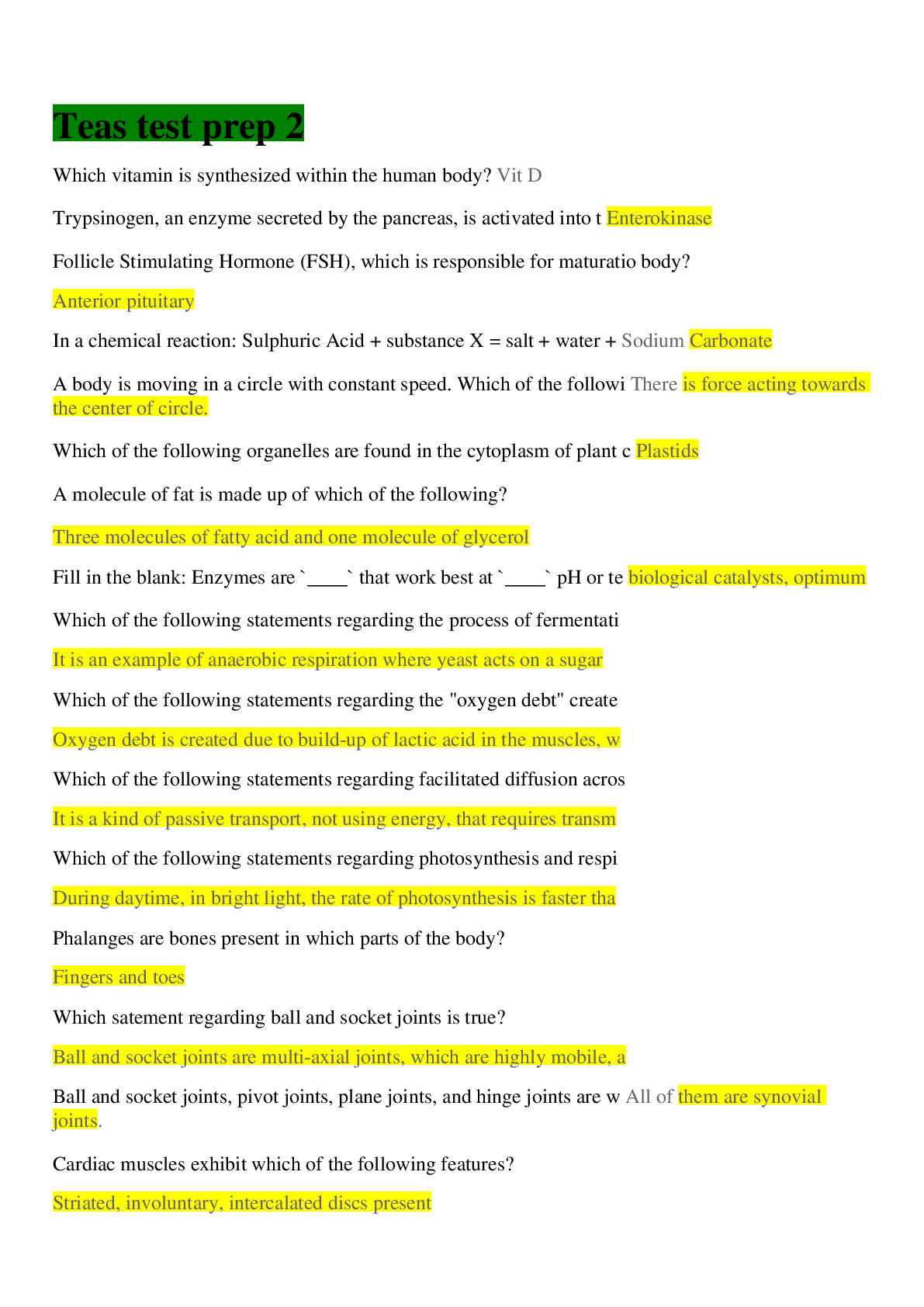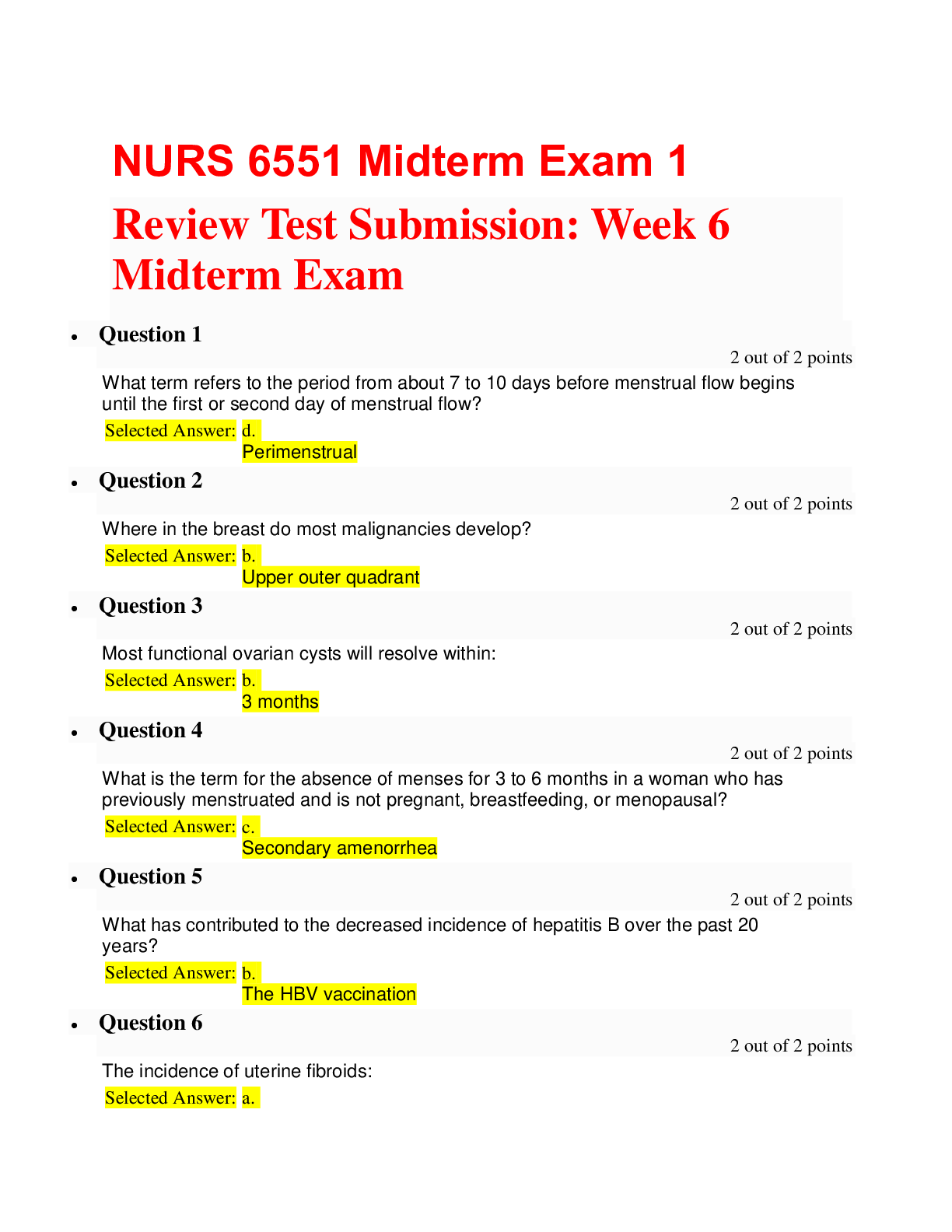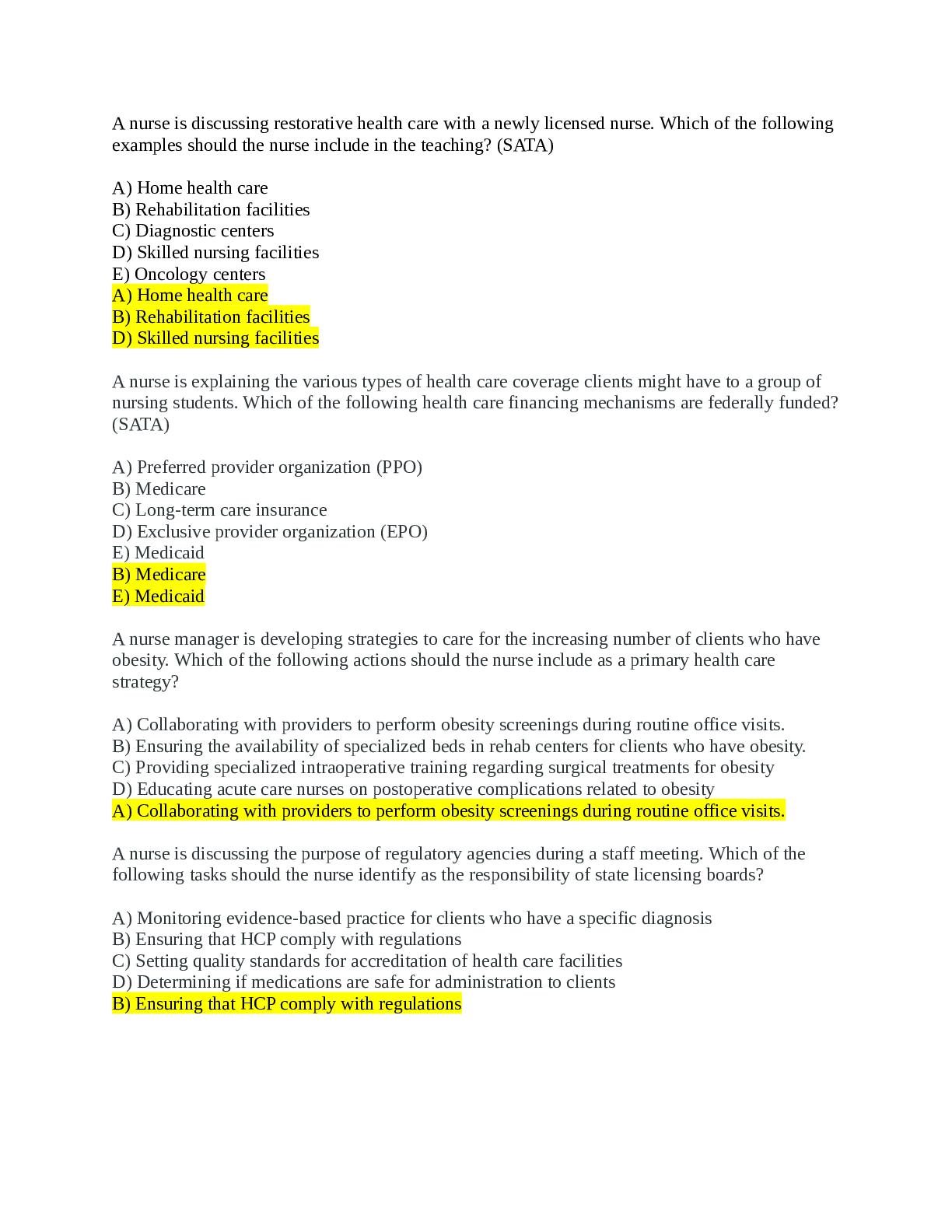Sociology > EXAM > Final Exam: Sociology Swansboro High School - SOCIAL STU 101 ( with 100% correct answers ) (All)
Final Exam: Sociology Swansboro High School - SOCIAL STU 101 ( with 100% correct answers )
Document Content and Description Below
6.1.3 Final Exam: Sociology Exam Exam Sociology (S4031684) Damien delaRosa Points possible: 60 Date: ____________ I. Short-Answer Questions (25 points) 1. Sociologist Émile Durkheim studied how s... ocieties maintain stability. He focused on the way each segment of society does its part, like members of a team. Is this a macro-level or a microlevel approach? Which of the three major theoretical approaches to sociology was Durkheim using? Explain your answers. (5 points) 2. Joe Franklin attends Lincoln High School, a large urban school near the apartment he shares with his parents and two sisters. On weekends he likes to get together with half a dozen longtime friends to hike, play cards, or listen to music. Identify a primary group, a secondary group, a voluntary group, and an involuntary group that Joe belongs to. (5 points) 3. In 1900 many Americans considered Italians to be members of a distinct race. Today many Italian Americans celebrate their ethnicity. Using Italian Americans as an example, what does it mean to say that race is socially constructed? Then, explain how ethnicity differs from race in terms of (a) who defines it and (b) what it is based on. (5 points) 4. The three sectors of the economy are primary, secondary, and tertiary. ? Explain what distinguishes each sector from the others. ? Provide one example for each sector. ? Describe one way in which the three sectors are similar.(5 points) 5. In one to three paragraphs, analyze different forms of collective behavior. Include how collective behavior differs from formal groups, at least one factor that influences crowd behavior, the difference between a mob and a riot, and a definition and example of mass behavior. (5 points) II. Application and Critical Thinking (35 points) A. Study the graphs below. Explain or comment on the data from each of the three sociological perspectives. (15 points) B. Read the following case study and answer the questions. (20 points) 1. List three factors in Oprah Winfrey's socialization that affected her development. (5 points) 2. What social class was Oprah Winfrey part of during her childhood, between ages 6 and 14? Give one piece of evidence to support this conclusion. What are two social institutions she used to move to a different class? (5 points) 3. Using a symbolic-interaction framework, comment on how Oprah Winfrey's biography illustrates the relationship between mass media and health. (5 points) 4. What technological change did Oprah Winfrey introduce into her programming in the 21st century that would not have been possible when she first went on television? What audience was she targeting with this new technology? (5 points) [Show More]
Last updated: 2 years ago
Preview 1 out of 4 pages
.png)
Buy this document to get the full access instantly
Instant Download Access after purchase
Buy NowInstant download
We Accept:

Reviews( 0 )
$7.00
Can't find what you want? Try our AI powered Search
Document information
Connected school, study & course
About the document
Uploaded On
Apr 18, 2021
Number of pages
4
Written in
Additional information
This document has been written for:
Uploaded
Apr 18, 2021
Downloads
0
Views
55


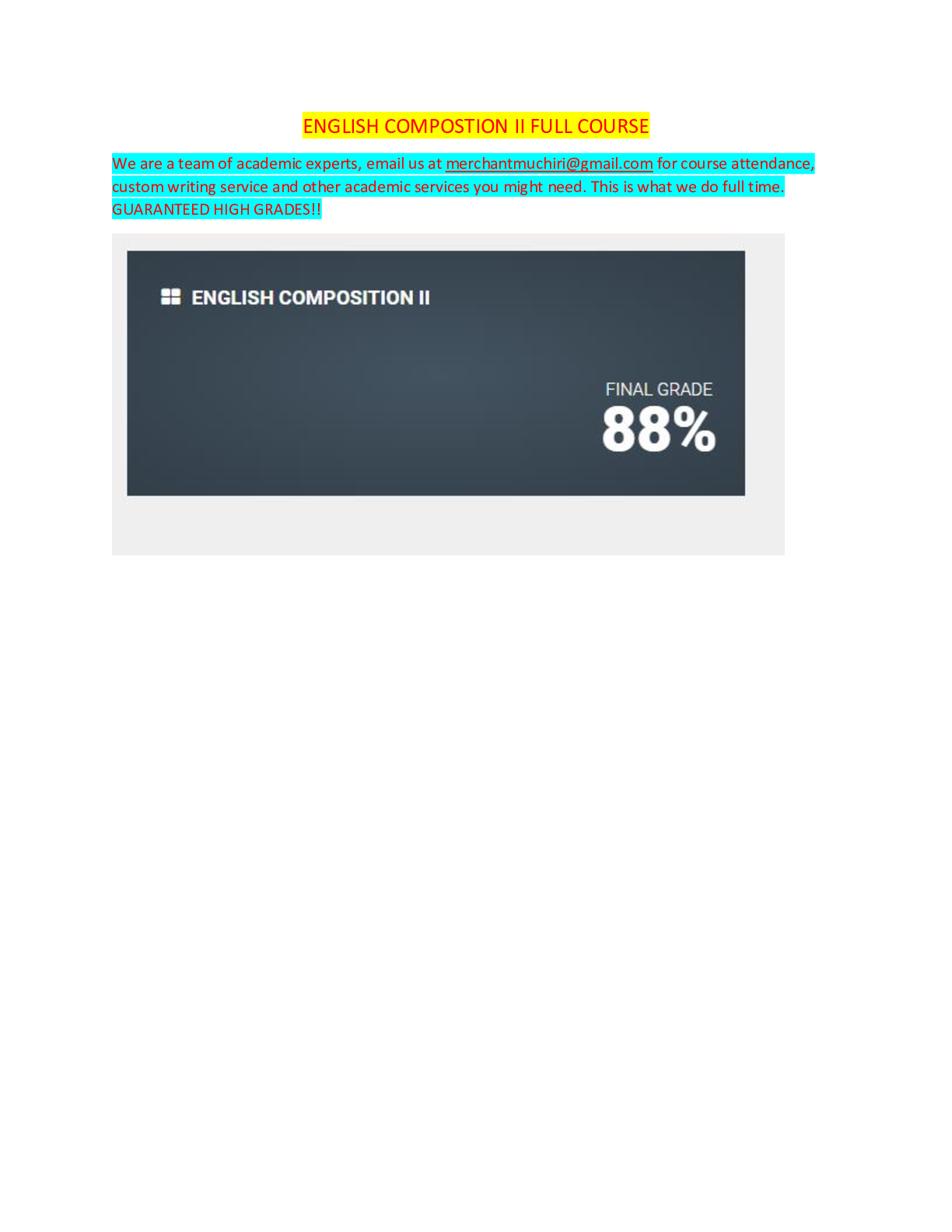

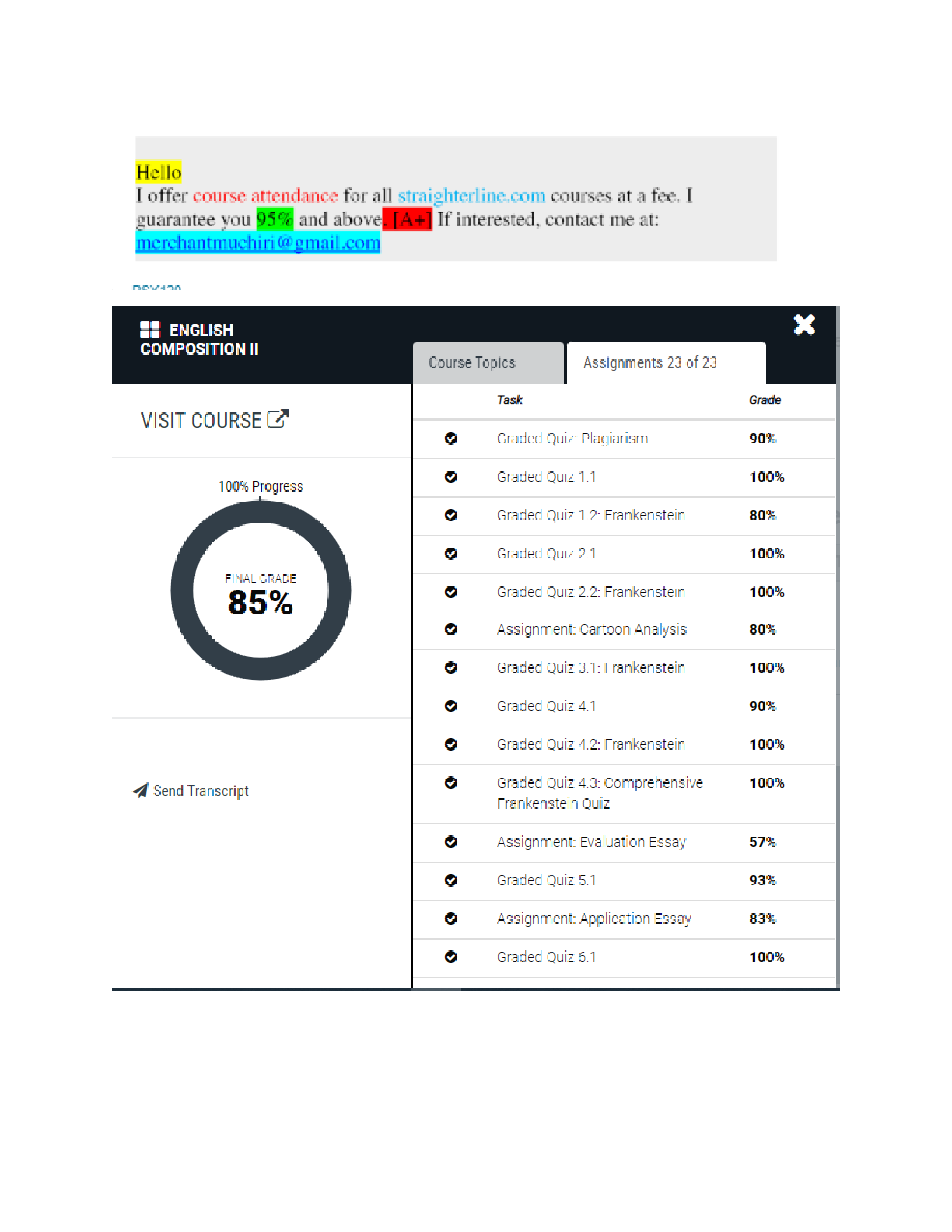


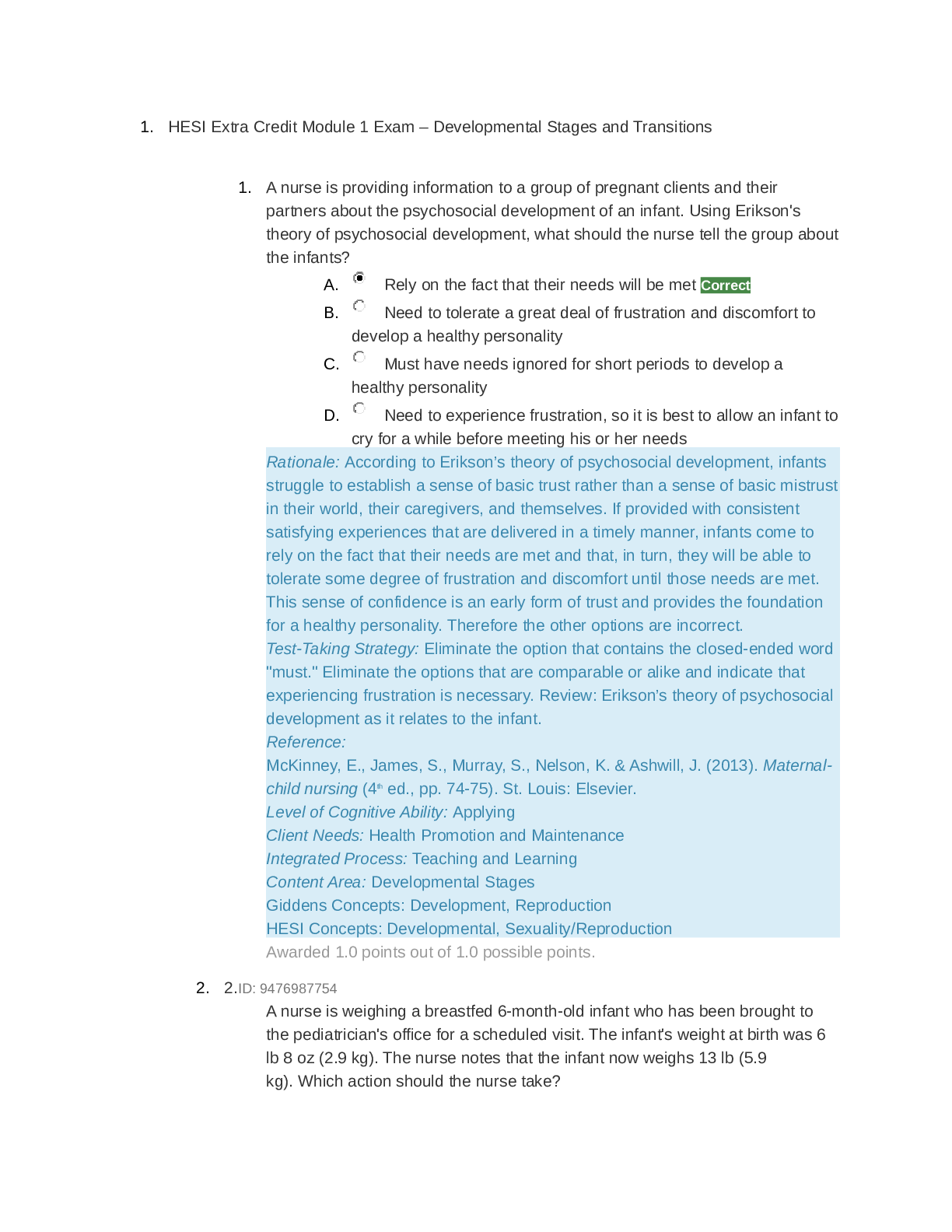
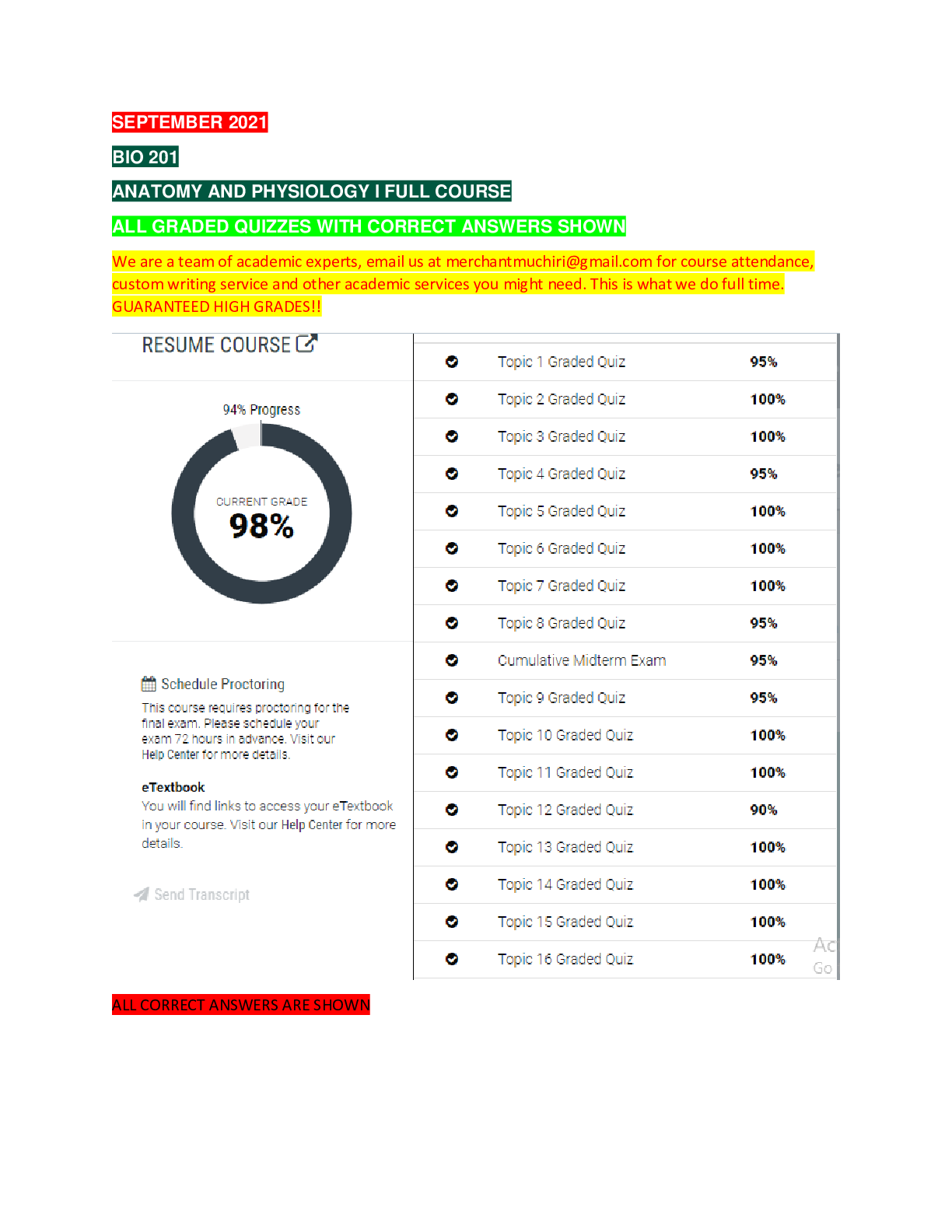
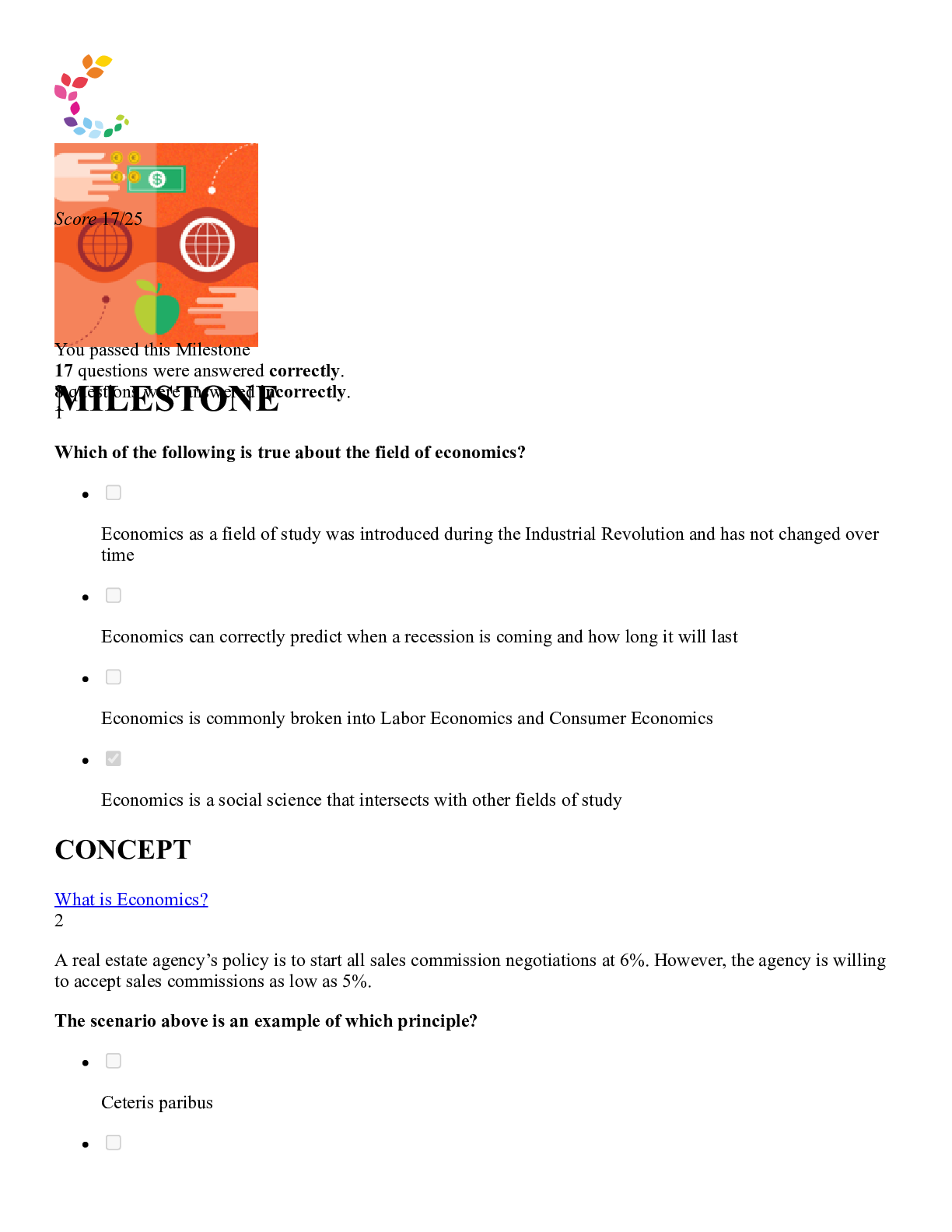
.png)
.png)
